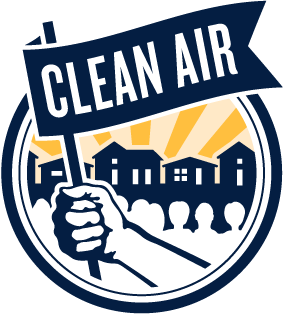Research a company
How to Research a Title V Facility
Title V is a federal program designed to standardize air quality permits and the permitting process for major sources of emissions across the country. Title V only applies to “major sources.” EPA defines a major source as a facility that emits, or has the potential to emit (PTE) any criteria pollutant or hazardous air pollutant (HAP) at levels equal to or greater than the Major Source Thresholds (MST).
ECHO: Learn about inspections, violations and enforcement actions for individual’s sources. You can search by zip code.
NYS DEC InfoLocator: Through this digital mapping tool you can find links to permits, reports and other official documents for all DEC regulated facilities. Zoom to the area where the facility is and turn on the appropriate layer through the menu on the left. Check out our tutorial blog post for a walkthrough.
Office of Hearings and Mediation Services Docket Management System: This website provides information about the Office of Hearings docket and hearing outcomes, including Decisions and Orders by the Commissioner, as well as Administrative Law Judge (ALJ) rulings and hearing reports. The list of Decisions, Orders, rulings, and hearing reports dates from 1992, and is reported to be updated regularly.
Toxics Release Inventory (TRI): TRI is a database containing data on disposal or other releases of over 600 toxic chemicals from thousands of U.S. facilities and information about how facilities manage those chemicals through recycling, energy recovery, and treatment. The TRI database was established by Section 313 of the Emergency Planning and Community Right-To-Know Act of 1986. This information is self-reported from companies.
Air Monitoring Tools
These tools are useful for tracking current air quality. Comparing the data from these tools to the information you find using the tools above can help you to identify point-source polluters causing issues in your community.
Air Quality Index sites: these two sites show the forecasted Air Quality Index (AQI) based on data from the EPA’s air monitoring network.
EPA/NYS DEC’s live map: this map is of the monitors that are part of the EPA and DEC’s official air monitoring network in NY. These monitors are extremely accurate, but the small number doesn’t always reflect air quality in all areas.
- EPA National Map: map of all monitors the EPA uses to determine AQI.
- Ontario’s Air Monitors: map of the monitors used by Ontario’s government. Because WNY is on the border with Ontario, this data is also very useful for us in identifying sources that could be affecting air quality.
PurpleAir live map: this map shows live data from the network of PurpleAir monitors. These are consumer-grade monitors, so data from individual monitors may not be entirely accurate, but as a whole these monitors give a clear picture of the current air quality conditions. This map also is a world map, so the live data is not restricted to national borders.
FireSmoke.ca: this map shows the forecasted thickness and travel path of smoke plumes from wildfires in North America, centered on Canada. Because wildfire smoke from Canada periodically affects our region, this is a very useful site to check. A local point source polluter may not be exceeding safety standards for emissions, but when wildfire smoke is added, very dangerous conditions can be generated.
